As most sports enthusiasts know, in 2021 Tiger Woods acquired an Achilles tendon rupture while training at home and in 2023 Aaron Rodgers, a former Green Bay Packer quarterback, did the same in the first game of the 2023/24 NFL season with the New York Jets. As with many sports injuries, it is painful and devastating and best managed by PREVENTION!
Spring is here! Many overjealous fitness enthusiasts will rush to pound the pavement and barely “fit in” a warm-up before participating. But, no matter how limited time is, skipping the warm-up is risky. This time of year, one can expect to feel a little cold and stiff, especially if you are over 40, and therefore a little caution and preparation are in order to avoid muscle/tendon strain, or worse yet, muscle/tendon tears. The Achilles tendon is one of the more common tendons torn. Prevention of muscle tears, including the Achilles tendon includes; gradual introduction to new activities, good overall conditioning, sport specific training, pre-stretch warm-up, stretch, strengthening, proper shoes, clothing, and equipment for the sport and conditions.
This is the second of two columns on Achilles tendon rupture. Last week, I discussed the definition, sign and symptoms of the problem. This week will present examination, treatment and outcomes.
A thorough history and physical exam is the first and best method to assess the extent of the Achilles tendon rupture and/or injury and determine accurate diagnosis. While a complete tear is relatively easy to determine, a partial or incomplete tear is less clear. Ultrasound and MRI are valuable tests in these cases. X-rays are not usually used and will not show tendon damage.
Consultation with an orthopedic or podiatric surgeon will determine the best treatment option for you. When conservative measures fail and for complete Achilles tendon ruptures, surgical intervention is usually considered to be the best option with a lower incidence of re-rupture. Surgery involves reattaching the two torn ends. In some instances, a graft using another tendon is required. A cast or walking boot is used post-operatively for 6-8 weeks followed by physical therapy.
Most people return close to normal activity with proper management. In the competitive athlete or very active individual, surgery offers the best outcome for those with significant or complete tears, to withstand the rigors of sports. Also, an aggressive rehabilitation program will expedite the process and improve the outcome. Walking with full weight on the leg after surgery usually begins at 6 -8 weeks and often requires a heel lift to protect the tendon. Advanced exercises often begin at 12 weeks and running and jumping 5-6 months. While a small bump remains on the tendon at the site of surgery, the tendon is well healed at 6 months and re-injury does not usually occur.
Prevention of muscle and tendon tears is critical for healthy longevity in sports and activities. In addition to the Achilles tendon, the tendons of the quadriceps (knee) and rotator cuff (shoulder) are also vulnerable. A comprehensive prevention program includes; gradual introduction to new activities, good overall conditioning, sport specific training, pre-stretch warm-up, stretch, strengthening, proper shoes, clothing, and equipment for the sport and conditions. Also, utilizing interval training, eccentric exercise (lowering body weight slowly against gravity and proprioceptive and agility drills are essential.
Eccentric Lowering and Lengthening: for the Achillies tendon during exercise. Beginning on the ball of both feet (1a), bend the strong knee to shift the weight onto the weak leg (1b). Slowly lowering the ankle/heel to the ground over 5-6 seconds. Repeat.
Proprioceptive Training: for the Achillies tendon. Standing on a Bosu Ball while exercising the upper body (for example, biceps curls, shrugs, rows, lats) while maintaining balance on the ball.
Agility Drills: for the Achilles tendon involves stepping through a “gait ladder” in various patterns and at various speeds.
Sources: MayoClinic.com;Christopher C Nannini, MD, Northwest Medical Center;Scott H Plantz, MD, Mount Sinai School of Medicine
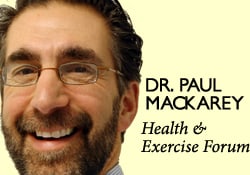
EVERY MONDAY – Read Dr. Paul J. Mackarey “Health & Exercise Forum!” via Blog
EVERY SUNDAY in "The Sunday Times" - Read Dr. Paul J. Mackarey “Health & Exercise Forum!” in hard copy
This article is not intended as a substitute for medical treatment. If you have questions related to your medical condition, please contact your family physician. For further inquires related to this topic email: drpmackarey@msn.com
Paul J. Mackarey PT, DHSc, OCS is a Doctor in Health Sciences specializing in orthopedic and sports physical therapy in Scranton and Clarks Summit. Dr. Mackarey is in private practice and is an associate professor of clinical medicine at Geisinger Commonwealth School of Medicine. For all of Dr. Mackarey's articles, visit our exercise forum!
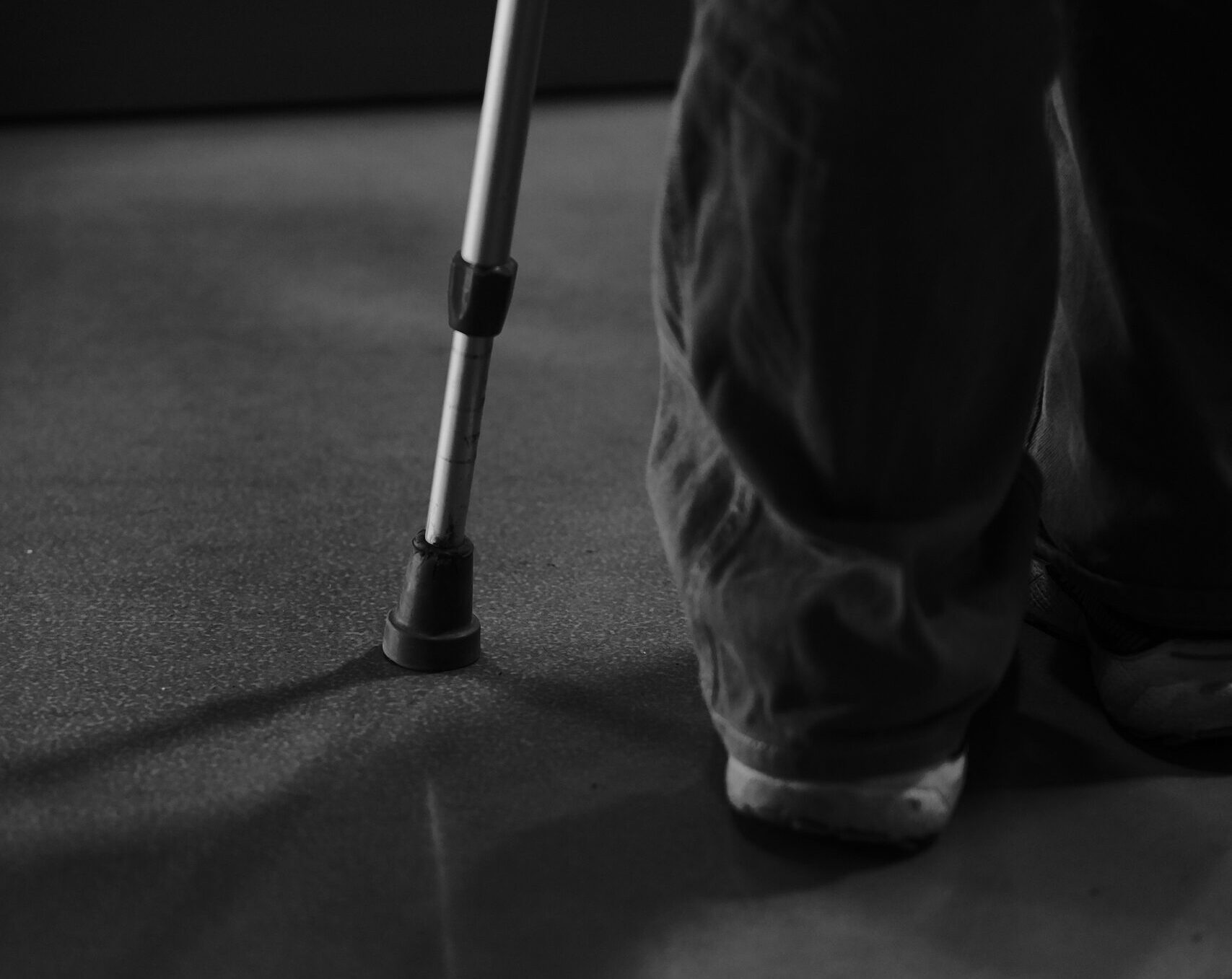
As most sports enthusiasts know, in 2021 Tiger Woods ruptured his Achilles tendon while training at home and in 2023 Aaron Rodgers, a former Green Bay Packer quarterback, did the same in the first game of the 2023/24 NFL season with the New York Jets. As with many sports injuries, it is painful and devastating and best managed by PREVENTION!
Spring is here and as the days continue to get longer and temperatures begin a slow steady rise, athletes and weekend warriors are eager to get outdoors to play and exercise. However, be mindful of the weather (damp and rainy), temperature (cool mornings and evenings) and winter “dust” on your muscles and tendons. Many overjealous fitness enthusiasts will rush to pound the pavement and barely “fit in” a warm-up before participating. But, no matter how limited time is, skipping the warm-up is risky.
This time of year, one can expect to feel a little cold and stiff, especially if you are over 40, and therefore a little caution and preparation are in order to avoid muscle/tendon strain, or worse yet, muscle/tendon tears. The Achilles tendon is one of the more common tendons torn. Prevention of muscle tears, including the Achilles tendon includes; gradual introduction to new activities, good overall conditioning, sport specific training, pre-stretch warm-up, stretch, strengthening, proper shoes, clothing, and equipment for the sport and conditions.
A muscle contracts to move bones and joints in the body. The tendon is the fibrous tissue that attaches muscle to bone. Great force is transmitted across a tendon which, in the lower body, can be more than 5 times your body weight. Often, a tendon can become inflamed, irritated, strained or partially torn from improper mechanics or overuse. Although infrequent, occasionally tendons can also snap or rupture. A tendon is more vulnerable to a rupture for several reasons such as a history of repeated injections of steroids into a tendon and use of medications such as corticosteroids and some antibiotics. Certain diseases such as gout, arthritis, diabetes or hyperparathyroidism can contribute to tendon tears. Also, age, obesity and gender are significant risk factors as middle-aged, overweight males are more susceptible to tendon tears. Poor conditioning, improper warm-up and cold temperatures may also contribute to the problem.
Tendon rupture is very painful and debilitating and must not be left untreated. While conservative management is preferred, surgical management is usually required for complete tears. The purpose of this column is to present the signs, symptoms and management of Achilles tendon ruptures.
The Achilles tendon (also called the calcaneal tendon), is a large, strong cordlike band of fibrous tissue in the back of the ankle. The tendon (also called the heel cord) connects the powerful calf muscle to the heel bone (also called the calcaneus). When the calf muscle contracts, (as when you walk on the ball of your foot), the Achilles tendon is tightened, tension is created at the heel and the foot points down like pushing a gas pedal or walking on tip of your toes. This motion is essential for activities such as walking, running, and jumping. A partial tear of the tendon would make these activities weak and painful, while a full tear through the tendon would render these activities impossible.
With age, the Achilles tendon (and other tendons) gets weak, thin, and dehydrated, thus making it prone to inflammation, degeneration, partial tear or rupture. The middle-aged weekend warrior is at greatest risk. A full or complete tear (Achilles tendon rupture) usually occurs about 2 inches above the heel bone and is associated with a sudden burst of activity followed by a quick stop or a quick start or change in direction, as in tennis, racquet ball, and basketball.
In some instances, the tendon can be injured by a violent contraction of calf when you push off forcefully at the same time the knee is locked straight as in a sudden sprint. Other times, the tendon is injured when a sudden and unexpected force occurs as in a trip off a curb or sudden step into a hole or a quick attempt to break a fall.

EVERY MONDAY – Read Dr. Paul J. Mackarey “Health & Exercise Forum!” via Blog
EVERY SUNDAY in "The Sunday Times" - Read Dr. Paul J. Mackarey “Health & Exercise Forum!” in hard copy
Next Week: Achilles tendon Part II of II
This article is not intended as a substitute for medical treatment. If you have questions related to your medical condition, please contact your family physician. For further inquires related to this topic email: drpmackarey@msn.com
Paul J. Mackarey PT, DHSc, OCS is a Doctor in Health Sciences specializing in orthopedic and sports physical therapy in Scranton and Clarks Summit. Dr. Mackarey is in private practice and is an associate professor of clinical medicine at Geisinger Commonwealth School of Medicine. For all of Dr. Mackarey's articles, visit our exercise forum!
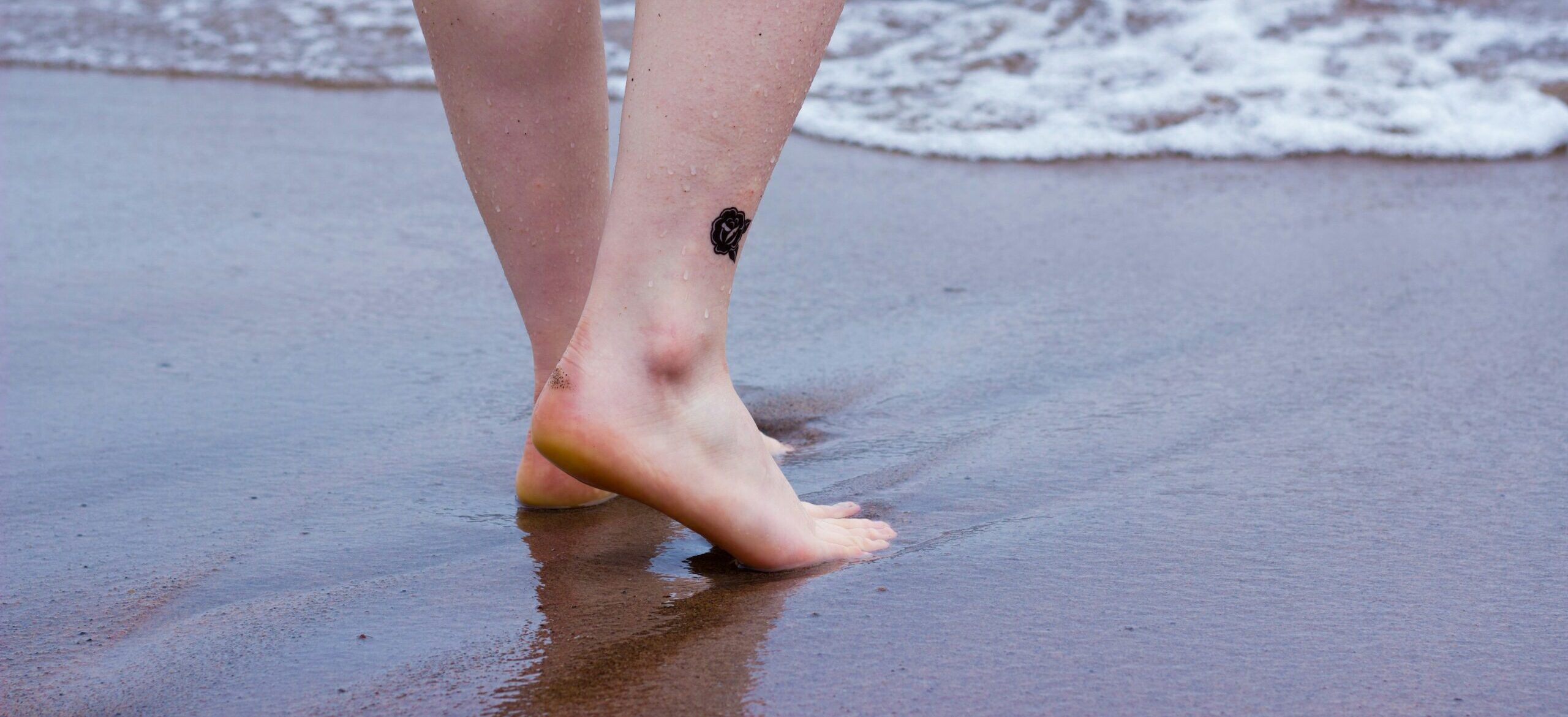
The World Health Organization has classified obesity as a chronic disease and determined that it is reaching epidemic proportions, not only in the United States, but globally. Moreover, closer to home, the Pennsylvania Department of Health has determined that PA ranks 17th among all states in the country for percentage of obese residents. Childhood obesity is defined as having a body mass index (BMI) at or above the 95th percentile for age and sex in children aged 2 and older.
People have theorized for many years that obesity must be genetic. Scientific research has validated this theory and more importantly, a recent study has shown that while there is an obesity gene that may predispose one to obesity, one can control the outcome with exercise. The fat mass and obesity gene (FTO) is linked to a high body mass index according to a new study in the Archives of Internal Medicine. More importantly, this study found that exercise can offset a genetic predisposition for obesity. Aerobic exercise 30-45 minutes 3-5 times per week coupled with mild weight training and other physical activities can overcome the FTO. With new knowledge, it becomes apparent that it is critical to promote a healthy lifestyle with exercise and physical activity at an early age to prevent childhood obesity.
Obesity increases with age and its prevalence among obese children will continue to be obese with age. Childhood obesity is the leading cause or is associated with: hypertension, Type II diabetes mellitus, coronary heart disease, lower extremity joint stress and pain, lower self-esteem and other psychological problems.
As with adult obesity, childhood obesity is most often caused by multiple problems including: nutritional, psychological, familial, and physiological.
Weight loss is not the primary role of a good childhood obesity program. The goal is to limit or stop weight gain so the child will eventually grow into their body weight over a period of many months or years. One study suggests that it requires 1 ½ years of body weight maintenance for every 20 percent excess in ideal body weight for a child to ultimately attain ideal body weight.
In conclusion, childhood obesity is a serious epidemic. It is physically and emotionally stressful for the child/adolescent and family. This problem requires a comprehensive team approach including: family, physician, educator, dietitian, psychologist, physical therapist and other health and exercise specialists. Lastly, to be successful, it must involve the entire family and be a lifetime lifestyle change 7 days a week regarding diet and exercise, not a 3-to-6-month fad. It must be a long-term program with a long-term goal!
Sources: World Health Organization (WHO), Archives of Physical Medicine, 2008, Vol 168, 1791 – 1797
Visit your doctor regularly and listen to your body.

EVERY MONDAY – Read Dr. Paul J. Mackarey “Health & Exercise Forum!” via Blog
EVERY SUNDAY in "The Sunday Times" - Read Dr. Paul J. Mackarey “Health & Exercise Forum!” in hard copy
This article is not intended as a substitute for medical treatment. If you have questions related to your medical condition, please contact your family physician. For further inquires related to this topic email: drpmackarey@msn.com
Paul J. Mackarey PT, DHSc, OCS is a Doctor in Health Sciences specializing in orthopedic and sports physical therapy in Scranton and Clarks Summit. Dr. Mackarey is in private practice and is an associate professor of clinical medicine at Geisinger Commonwealth School of Medicine. For all of Dr. Mackarey's articles, visit our exercise forum!

At least once a week, a patient jokingly asks if they can get a “lube job” to loosen up their stiff knee joint. I respond by providing them with information about osteoarthritis and viscosupplementation, a conservative treatment administered by injection and approved by the FDA for the treatment of osteoarthritis of the knee.
Osteoarthritis (OA) is also known as degenerative arthritis. It is the most common form of arthritis in the knee. OA is usually a gradual, slow and progressive process of “wear and tear” to the cartilage in the knee joint which eventually wears down to the bony joint surface. It is most often found in middle-aged and older people and in weight bearing joints such as the hip, knee and ankle. Symptoms include: pain, swelling, stiffness, weakness and loss of function.
Your family physician will examine your knee to determine if you have arthritis. In more advanced cases you may be referred to an orthopedic surgeon or rheumatologist for further examination and treatment. It will then be determined if you are a candidate for viscosupplementation. While this procedure is the most commonly used in the knee, it has also been used for osteoarthritis in the hip, shoulder and ankle.
Viscosupplementation is a procedure, usually performed by an orthopedic surgeon or rheumatologist, in which medication injected into the knee joint acts like a lubricant.
The medication is hyaluronic acid is a natural substance that normally lubricates the knee. This natural lubricant allows the knee to move smoothly and absorbs shock. People with osteoarthritis have less hyaluronic acid in their knee joints. Injections of hyaluronic acid substances into the joint have been found to decrease pain, improve range of motion and function in people with osteoarthritis of the knee.
When conservative measures, such as anti-inflammatory drugs, physical therapy, steroid injections fail to provide long lasting relief, viscosupplementation may be a viable option. Often, physical therapy and exercise are more effective following this injection to provide additional long-term benefit. Unfortunately, if conservative measures, including viscosupplementation fails, surgery, including a joint replacement may be the next alternative.
In 1997 the FDA approved viscosupplementation for osteoarthritis of the knee. Presently, there are several products on the market. One type is a natural product made from the comb of a rooster. However, if you are allergic to eggs or poultry products or feathers, you should not use the natural product. The other medication is best used for patients with allergies because it is manufactured as a synthetic product.
The long-term effects of viscosupplementation is much greater when other conservative measures are employed:
SOURCES: Genzyme Co, Sanofi-Synthelabo Inc, Seikagaku Co. and American Academy of Orthopaedic Surgeons
Visit your doctor regularly and listen to your body.

EVERY MONDAY – Read Dr. Paul J. Mackarey “Health & Exercise Forum!” via Blog
EVERY SUNDAY in "The Sunday Times" - Read Dr. Paul J. Mackarey “Health & Exercise Forum!” in hard copy
This article is not intended as a substitute for medical treatment. If you have questions related to your medical condition, please contact your family physician. For further inquires related to this topic email: drpmackarey@msn.com
Paul J. Mackarey PT, DHSc, OCS is a Doctor in Health Sciences specializing in orthopedic and sports physical therapy in Scranton and Clarks Summit. Dr. Mackarey is in private practice and is an associate professor of clinical medicine at Geisinger Commonwealth School of Medicine. For all of Dr. Mackarey's articles, visit our exercise forum!

April is National Stress and Anxiety Awareness Month! According to the National Institutes of Health, an estimated 19.1% of U.S. adults 18 and older had an anxiety disorder in the past year. Anxiety disorders were higher for females (23.4%) than for males (14.3%). An estimated 31.1% of U.S. adults experience an anxiety disorder at some time in their lives.
There are a wide variety of anxiety disorders and will vary by the objects or situations that induce them. However, the features of excessive anxiety and related behavioral disturbances are similar. Anxiety disorders can interfere with daily activities such as job performance, schoolwork, and relationships. Symptoms include: distress, nausea, shortness of breath, bowel pattern changes, excessive perspiration, frequent laughing or crying, restlessness, and is often associated with depression. While there are many types and degrees of anxiety and there is no substitute for medical and psychological care, there are some simple and basic tools to help manage the problem…daily exercise is one easy, affordable and accessible suggestion for most. Multiple studies have discussed the incidence of unhealthy self management of anxiety, including the use of alcohol and recreational drugs.
Last week, I presented coping tips for the management of anxiety. In this column, I will discuss one of the most understated benefits of exercise – mental health! Specifically, aerobic exercise (exercise that increases your heart rate for 30 minutes or more) such as walking, biking, running, swimming, hiking, elliptical & stepper machines to name a few, is the secret to “runner’s high.” This exercise euphoria is not limited to runners alone, but all who engage in aerobic exercise are more likely to experience high energy, positive attitude and mental wellness.
Physical activity, specifically aerobic exercise, is a scientifically proven useful tool for preventing and easing anxiety and depression symptoms. Studies in the British Journal of Medicine and the Journal of Exercise and Sports Science found that anxiety and depression scores were significantly reduced in groups that engaged in aerobic running, jogging or walking programs, 30-45 minutes 3-5 days per week for 10-12 weeks, when compared to a control group and a psychotherapy counseling group.
According to research reported in sports medicine journals, exercise reduces anxiety and depression in two ways, psychologically (mentally) and physiological (physically).
SOURCES: University of Pittsburgh Medical Center (UPMC); National Institutes of Health (NIH); The American Journal of Sports Medicine
Visit your doctor regularly and listen to your body.

EVERY MONDAY – Read Dr. Paul J. Mackarey “Health & Exercise Forum!” via Blog
EVERY SUNDAY in "The Sunday Times" - Read Dr. Paul J. Mackarey “Health & Exercise Forum!” in hard copy
This article is not intended as a substitute for medical treatment. If you have questions related to your medical condition, please contact your family physician. For further inquires related to this topic email: drpmackarey@msn.com
Paul J. Mackarey PT, DHSc, OCS is a Doctor in Health Sciences specializing in orthopedic and sports physical therapy in Scranton and Clarks Summit. Dr. Mackarey is in private practice and is an associate professor of clinical medicine at Geisinger Commonwealth School of Medicine. For all of Dr. Mackarey's articles, visit our exercise forum!
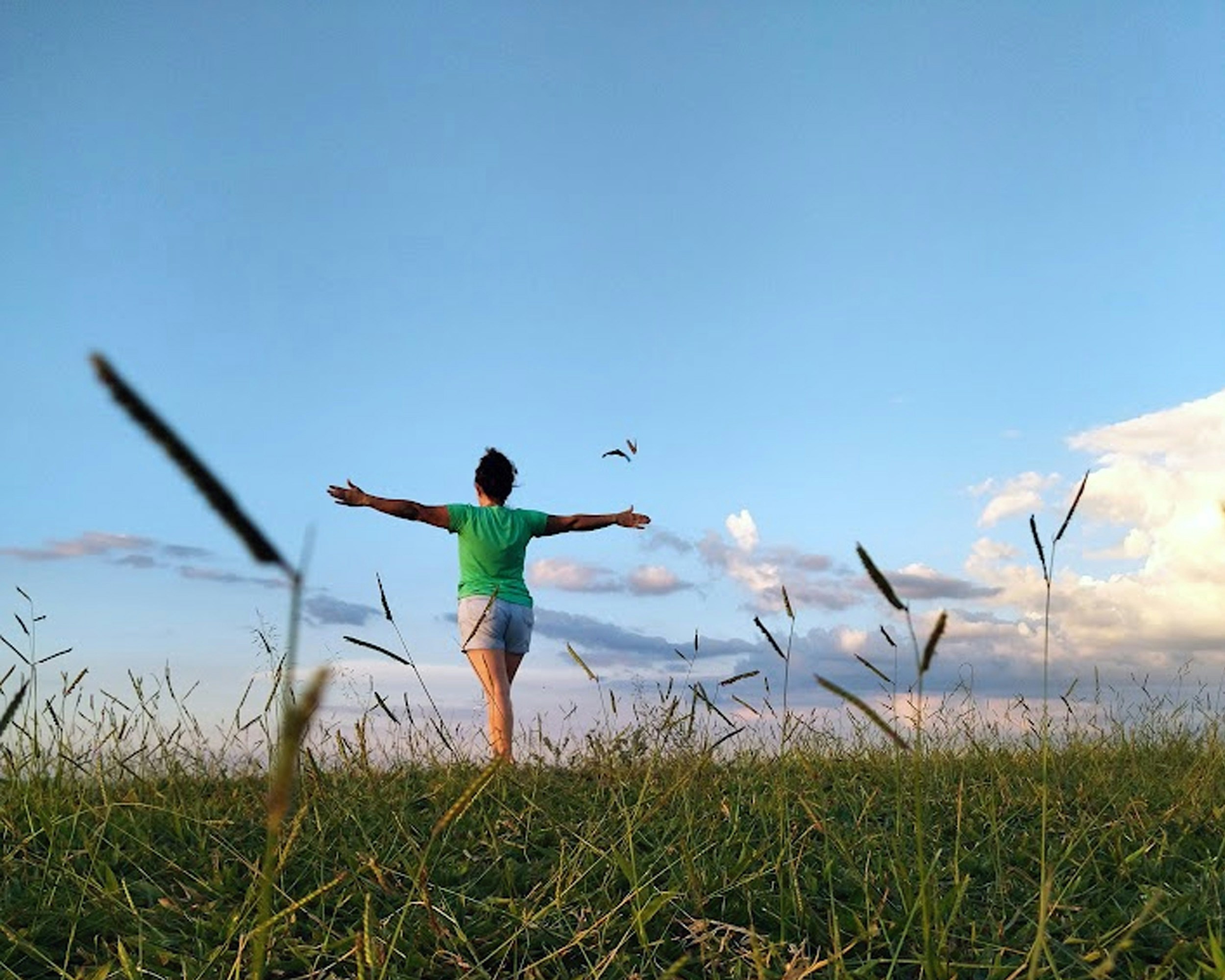
April is National Stress and Anxiety Awareness Month! According to the National Institutes of Health, an estimated 19.1% of U.S. adults 18 and older had an anxiety disorder in the past year. Anxiety disorders were higher for females (23.4%) than for males (14.3%). An estimated 31.1% of U.S. adults experience an anxiety disorder at some time in their lives.
There are a wide variety of anxiety disorders and will vary by the objects or situations that induce them. However, the features of excessive anxiety and related behavioral disturbances are similar. Anxiety disorders can interfere with daily activities such as job performance, schoolwork, and relationships. Symptoms include: distress, nausea, shortness of breath, bowel pattern changes, excessive perspiration, frequent laughing or crying, restlessness, and is often associated with depression. While there are many types and degrees of anxiety and there is no substitute for medical and psychological care, there are some simple and basic tools to help manage the problem…daily exercise is one easy, affordable and accessible suggestion for most.
Multiple studies have discussed the incidence of unhealthy self management of anxiety, including the use of alcohol and recreational drugs. The University of Pittsburgh Medical Center (UPMC) recommends the following healthy tips for coping with anxiety:
Chronic anxiety also can point to an underlying mental health issue. When your anxiety causes extreme distress or interrupts your ability to function on a daily basis, or when panic attacks are frequent and debilitating, it’s important to talk to your physician and ask for a referral to a mental health professional. They can provide a treatment plan, which may include specialized anti-anxiety medicine, psychotherapy, or both.
SOURCES: University of Pittsburgh Medical Center (UPMC); National Institutes of Health (NIH)
Visit your doctor regularly and listen to your body.

EVERY MONDAY – Read Dr. Paul J. Mackarey “Health & Exercise Forum!” via Blog
EVERY SUNDAY in "The Sunday Times" - Read Dr. Paul J. Mackarey “Health & Exercise Forum!” in hard copy
This article is not intended as a substitute for medical treatment. If you have questions related to your medical condition, please contact your family physician. For further inquires related to this topic email: drpmackarey@msn.com
Paul J. Mackarey PT, DHSc, OCS is a Doctor in Health Sciences specializing in orthopedic and sports physical therapy in Scranton and Clarks Summit. Dr. Mackarey is in private practice and is an associate professor of clinical medicine at Geisinger Commonwealth School of Medicine. For all of Dr. Mackarey's articles, visit our exercise forum!

Allergies affect 30 % of adults and 40% of children in the United States. Avoiding the outdoors is often not an option…especially if you enjoy outdoor activities and sports. Not long ago, it was unthinkable that an athlete with serious allergies could compete at a high level, such as the Olympics. Now, in great part due to advanced research, medications and proper management, an Olympic gold medal for those suffering from allergies is a reality. Recently, the National Institute of Allergy and Infectious Disease at the National Institutes of Health have published research on this topic to provide a better understanding and make recommendations.
The most common allergic reactions which athletes suffer from are sneezing, itchy and watery eyes, runny nose and coughing. Moreover, 67% of those with these symptoms also suffer from asthma. The athlete in NEPA is particularly vulnerable when the pollen count is high during spring and fall for several reasons. One, after being indoors all winter, one might develop a heightened sensitivity to allergens. Also, increased rapid and deep breathing during exercise makes athletes more susceptible to significant symptoms when exposed to allergens such as tree, grass and weed pollens.
As mentioned last week, allergy skin testing can be performed to determine the allergens to which you are susceptible. Once determined, allergy shots are effective in building up tolerance to these allergens. If appropriate, you may be able to use allergy drops, administered under the tongue and conveniently used at home.
Asthma suffers should use their inhaler BEFORE symptoms occur. A recent study found that pretreatment using a short-acting bronchodilator inhaler within 15 minutes before exercise is very effective in preventing asthma symptoms for more than four hours. It is important to keep a bronchodilator available. If you fail to benefit from this, see your physician for other methods to control your exercise-induced symptoms.
Whether you have allergic respiratory problems from rhinitis or asthma, you many benefit from conditioning your airways with a 10 to 15 minute warm-up before and cool-down after the activity. This may serve to gradually prepare your lungs for an increased demand.
In addition to preventing dehydration on hot and humid days, constant hydration is very important for the athlete with allergies to prevent dry airways in athletes.
Know the signs and symptoms of asthma (coughing, wheezing, tightness in chest, shortness of breath).
Some schools have a file on each student athlete with a allergic or asthmatic problem which requires medication. The file includes information such as medical doctor release and instruction, emergency contacts and medications. Students must have their medications on hand before they can enter the field. The National Athletic Trainers Association recommends using a peak flow meter to monitor at risk players and can determine when a player can return to the field.
If possible, find an alternate practice facility with climate control for athletes at risk. Plan practices for these athletes when the pollen count is low. Check the newspaper or internet for pollen counts in your area. Training by the water, (ocean) where there is a breeze and less pollen is helpful.
Shower and change clothing immediately after being outdoors
During a flare up, do less aerobic exercise to limit stress on respiratory system. Try strength training indoors instead.
When pollen count is high, keep windows shut at home and in your car….use air-conditioning.
Keep pets out of your bedroom…especially when sleeping
Dry clothing in dryer…do not hang on clothesline outdoors
Sources: American College of Allergy, Asthma, and Immunology. National Athletic Trainers Association.

EVERY MONDAY – Read Dr. Paul J. Mackarey “Health & Exercise Forum!” via Blog
EVERY SUNDAY in "The Sunday Times" - Read Dr. Paul J. Mackarey “Health & Exercise Forum!” in hard copy
This article is not intended as a substitute for medical treatment. If you have questions related to your medical condition, please contact your family physician. For further inquires related to this topic email: drpmackarey@msn.com
Paul J. Mackarey PT, DHSc, OCS is a Doctor in Health Sciences specializing in orthopedic and sports physical therapy in Scranton and Clarks Summit. Dr. Mackarey is in private practice and is an associate professor of clinical medicine at Geisinger Commonwealth School of Medicine. For all of Dr. Mackarey's articles, visit our exercise forum!
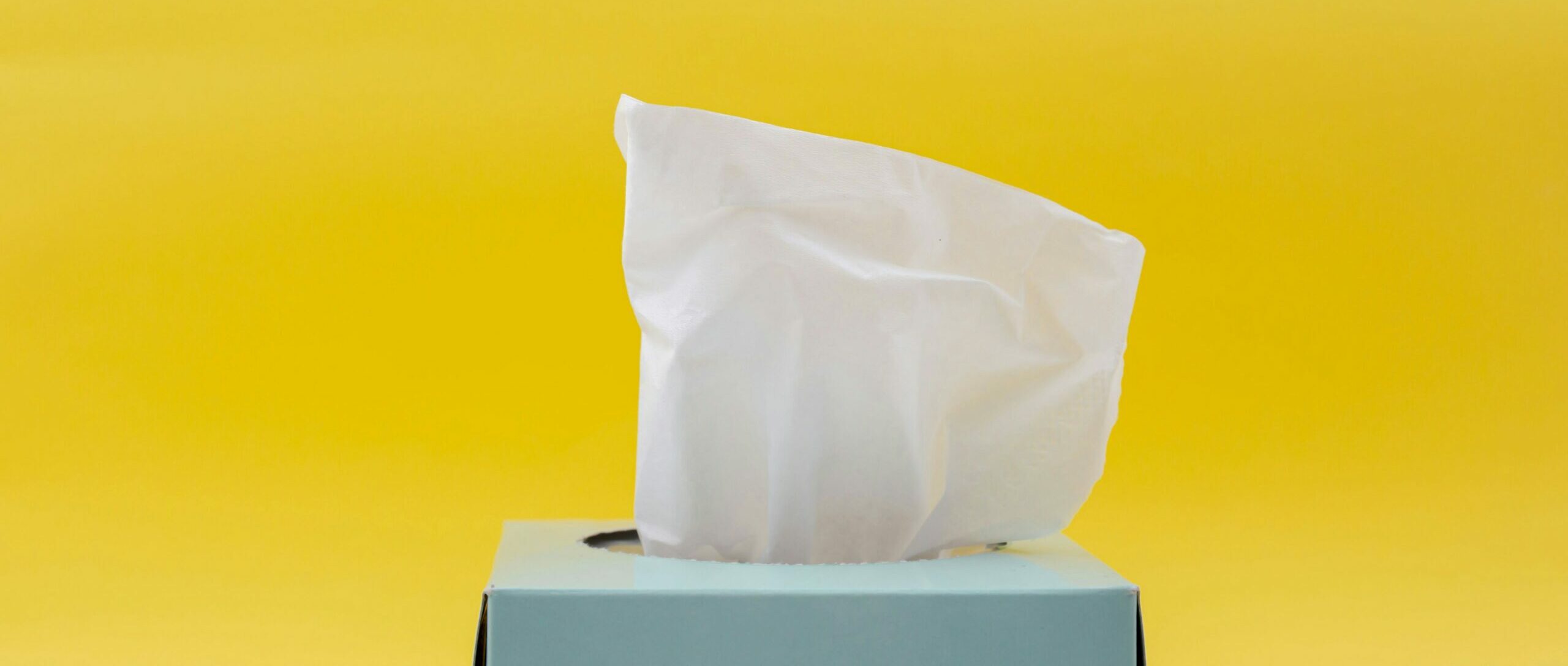
Recently, a reader shared with me their concern about the aging process. They were not happy with the changes in their body, despite exercising regularly. New research suggests that there may be some forms of exercise that are better than others to counteract the aging process. With the accumulation of more and more birthdays, I too, am concerned about the changes in my body!
The deterioration and degeneration of the body associated with the aging process is well-documented and the musculoskeletal system is no exception. As we age, weight bearing joints of the lower body (hips and knees) frequently suffer from wear and tear degeneration. Loss of muscle mass and strength is also common with age. Specifically, damage to older muscles has been found to regenerate slowly and incompletely and the problem runs as deep as the cellular level as the mitochondria diminish in quality and quantity. However, there is good news: a recent study published this spring in Cell Metabolism suggests that certain types of exercise can actually regenerate and reverse the aging mitochondria.
As popular and common as exercise is, little is known about the influence and impact it has on the cellular level. A research team at the Mayo Clinic decided to answer this question and conducted an experiment to determine the cellular effects of different types of exercise on aging muscles.
The Mayo team chose 72 men and women and separated them into two groups: 30 and under and older than 64. All subjects were healthy but sedentary. Pretest analysis was performed for blood sugar levels, gene activity, muscle cell mitochondrial health, and aerobic fitness level. Subjects from the 30 and under group and the over 64 group were randomly assigned to one of four research groups.
Group One: Vigorous weight training 3-5 times per week, Group Two: Interval aerobic exercise on a stationary bike (pedaling hard and fast for four minutes followed by a recovery at a slow pace for three minutes then repeating the sequence 3 or more times) 3 times per week, Group Three: Moderate aerobic exercise on a stationary bike for 30 minutes 2-3 days per week and light weight lifting on the other 2-3 days, Group Four: Control group who did not exercise. After 12 weeks, lab tests were repeated and data compiled and analyzed.
In the 30 and under group as well as the over 64 group, all three experimental groups improved in fitness level and blood sugar regulation. As expected, Group One, the vigorous weight training group, showed the greatest gains in muscle mass and strength. Also, not surprisingly, Group Two, the interval training group, had the greatest gains in endurance. However, the most unexpected results came when retesting the muscle cells by biopsy. Only group two, the interval aerobic exercise group demonstrated the most significant improvement in the activity levels of their genes in both the young and older groups, when compared to the vigorous weight training and moderate exercise groups.
Moreover, the positive improvements in the genes of the older group far surpassed that found in the younger group. For example, in the younger group, 274 genes improved compared to 170 genes in the moderate exercise group and 74 in the vigorous weight training. In the older group, 400 genes were improved in the interval aerobic group while 33 for weight training and 19 for moderate exercise groups.
It is well known that loss of muscle mass and strength is common with age. Specifically, older muscles have been found to regenerate slowly and incompletely, and the problem runs as deep as the cellular level as the mitochondria diminishes in quality and quantity. However, this study suggests that interval aerobic exercise can regenerate and reverse the aging mitochondria. Healthier mitochondria can produce energy for muscle cells to function at a higher level.
Interval aerobic exercise can have anti-aging effects. In fact, the older your muscles, the more you will benefit from, not just moderate exercise, but more vigorous interval aerobic exercise. Furthermore, interval training may be applied, not only to aerobic exercise, but to weight training for the upper and lower body. According to the American College of Sports Medicine, high intensity interval training, also called HIIT workouts, involves a repetition of a series of high-intensity exercise (aerobic or weight training) for a specific period of time (3-5 minutes) followed by a specific period of rest or low-intensity exercise (1-3 minutes).
The intensity can be increased by speed or resistance. HIIT workouts have been associated with increased caloric expenditure with less exercise time, as well as improved strength and endurance. Most recently, it has been found to improve cell energy in the aging population. However, do not attempt to increase the intensity of your exercise program without consulting with your physician first. Once medially approved, consult with a Doctor of Physical Therapy to create a program specifically designed for you.
Therefore, if your gene pool is questionable like most of us, don’t use that as an excuse. There are things you can do to have a positive impact on your DNA to live longer and healthier…one of them is EXERCISE!
Visit your doctor regularly and listen to your body. Keep moving, eat healthy foods, exercise regularly, and live long and well!

EVERY MONDAY – Read Dr. Paul J. Mackarey “Health & Exercise Forum!” via Blog
EVERY SUNDAY in "The Sunday Times" - Read Dr. Paul J. Mackarey “Health & Exercise Forum!” in hard copy
This article is not intended as a substitute for medical treatment. If you have questions related to your medical condition, please contact your family physician. For further inquires related to this topic email: drpmackarey@msn.com
Paul J. Mackarey PT, DHSc, OCS is a Doctor in Health Sciences specializing in orthopedic and sports physical therapy in Scranton and Clarks Summit. Dr. Mackarey is in private practice and is an associate professor of clinical medicine at Geisinger Commonwealth School of Medicine. For all of Dr. Mackarey's articles, visit our exercise forum!
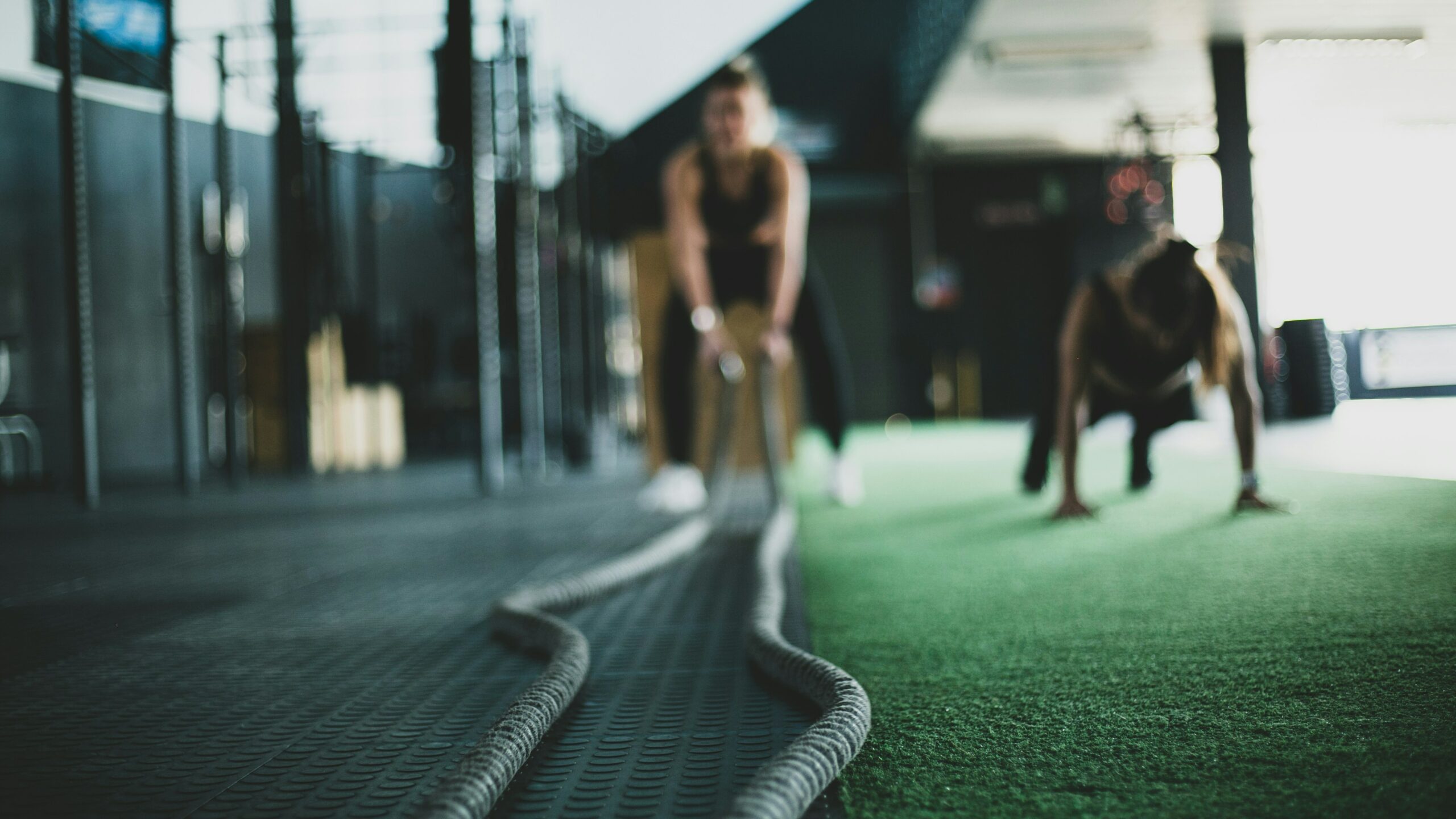
82 million adults spend an estimated 28 billion dollars on gym memberships each year! WHY? There are many reasons we exercise. Some people exercise to prevent illnesses such as cardiovascular disease or osteoporosis. Others exercise for mental health and as a stress release; others do it to improve strength, flexibility, and endurance to prepare for a sport. However, the number one reason people exercise is TO LOSE WEIGHT!
When it comes to losing weight, patients have asked me a wide variety of questions over the years. However, certain questions are consistent. “What exercise is the best to burn calories?” “Even though I exercise 2-3 times per week, why can’t I lose weight?” “What is BMR?” “If I eat a Snickers bar, how much exercise do I need to do to burn it off?” “Are there any tools that I can use to help me track my calories and exercise output?”
Have you ever heard people say that they never felt better or burned more calories than they did when they ran? Well, they may be right! The following numbers are based on the average male weighing 150 pounds: running 6 miles per hour will burn 700+ calories (11-12 calories per minute); vigorously skipping with jump rope or fast cycling will do the same; vigorous walking at 4 miles per hour and moderate biking will burn 600+ calories (10 calories per minute). The 400-500 calorie club includes the following activities: slow jogging, swimming, football, basketball, baseball, tennis, skiing, and moderate walking (3.5 miles per hour). Light gardening burns more calories than golfing using a cart (250 vs. 180).
How many times have you heard people say, “It is hard for me to lose weight because I have a slow metabolism?” What does that mean? To explain this in detail you first must understand BMR. BMR is basic metabolic rate. It is the number of calories that your body requires to operate basic body functions that you don’t actively control, such as continuing to breathe, and keeping your cells and organs working each day. The BMR is influenced by age, height, gender, body fat, and fitness level. BMR is inherently different (high or low) in everyone.
While you can’t change your gender or height, you can influence some things to influence your BMR and burn more calories at rest. One, exercise for longer durations, with greater intensity and more frequently. Two, lower body fat by eating less calories, especially fat and carbohydrates in your diet. Simply, eat less calories than you burn! Three, improve your muscle/fat ratio by weight training.
Basic Metabolic Index (BMI):
BMI: < 18.5 = Underweight
BMI: 18.5 – 24.5 = Normal Weight
BMI: 25. - 29.9 = Overweight
BMI: >30. = Obestiy
For example, I am a 66-year-old male, weighing 155 pounds at 5 feet 8 inches tall with a BMI of 23.6
*Calculate your BMI by entering your gender, height and weight and find how many calories per food item at:
There are several tools available for free online to help with tracking calories and exercise visit Prevention Magazine at: www.myfooddiary.com or try the App “Lose It”
BMI Calculator – to calculate your BMI
Calorie Burner – to calculate how many calories are burned with various activities
Daily Calorie Calculator – Find how many calories are in specific foods and what you need to do to lose or gain weight.
So, remember, the number one reason we exercise is TO LOSE WEIGHT! But depending on exercise alone to lose weight is an exercise in futility. Losing weight is an intelligent and consistent combination of a balanced diet with portion control, proper nutrition, adequate exercise and activity grounded in lifestyle changes.
Mayo Clinic –December 2009
FOOD/CALORIES
MINUTES NEEDED TO BURN CALORIES AT MODERATE PACE: (Walk/Dance/Bike)
MINUTES NEEDED TO BURN CALORIES AT MODERATE PACE: (Run/Swim/Bike)
(Body Weight) (Body Weight)
125# 175# 225# 125# 175# 225#
SNICKERS BAR 65 48 37 28 20 16
(2 oz. - 271 cal)
APPLE 17 13 10 8 5 4
(Med - 72 cal)
ROOT BEER 37 27 21 16 11 9
(12 oz. – 152 cal)
SPARKLING WATER 0 0 0 0 0 0
(0 cal)
GROUND BEEF 51 38 29 22 16 12
85% lean
(3 oz. – 213 cal)
WHITE TUNA 26 19 15 11 8 6
Water Packed
(3 oz. – 109 cal)
ICE CREAM 66 48 37 29 21 16
Vanilla
(1 cup – 274 cal)
STRAWBERRIES 13 9 7 6 4 3
(1 cup – 53 cal)
GLAZED DOUGHNUT 57 42 33 25 18 14
(med – 239 cal)
TOAST 30 22 17 13 9 7
Whole-grain – 1 slice
(1 tbsp jam – 125 cal)
STARBUCKS CAFFE’ 65 48 37 28 20 16
MOCHA
2% milk – whp crm
(12 oz. – 270 cal)
COFFEE 10 7 5 4 3 2
1 tbsp half/half – 1 tbsp sugar
(12 oz. – 40 cal)

EVERY MONDAY – Read Dr. Paul J. Mackarey “Health & Exercise Forum!” via Blog
EVERY SUNDAY in "The Sunday Times" - Read Dr. Paul J. Mackarey “Health & Exercise Forum!” in hard copy
This article is not intended as a substitute for medical treatment. If you have questions related to your medical condition, please contact your family physician. For further inquires related to this topic email: drpmackarey@msn.com
Paul J. Mackarey PT, DHSc, OCS is a Doctor in Health Sciences specializing in orthopedic and sports physical therapy in Scranton and Clarks Summit. Dr. Mackarey is in private practice and is an associate professor of clinical medicine at Geisinger Commonwealth School of Medicine. For all of Dr. Mackarey's articles, visit our exercise forum!

Last week’s column was dedicated to Rosie Malloy as we discussed the importance of laughter for health and wellness. In this column, I will discuss one of the most understated benefits of exercise – mental health! Specifically, aerobic exercise (exercise that increases your heart rate for 30 minutes or more) such as walking, biking, running, swimming, hiking, elliptical & stepper machines to name a few, is the secret to “runner’s high.” This exercise euphoria is not limited to runners alone, but all who engage in aerobic exercise are more likely to experience high energy, positive attitude, and mental wellness by helping reduce depression.
Physical activity, specifically aerobic exercise, is a scientifically proven useful tool for preventing and easing depression symptoms. Studies in the British Journal of Medicine and the Journal of Exercise and Sports Science found that depression scores were significantly reduced in groups that engaged in aerobic running, jogging or walking programs, 30-45 minutes 3-5 days per week for 10-12 weeks, when compared to a control group and a psychotherapy counseling group.
Depression is the most common mental disorder and is twice as common among women as in men. Symptoms include: fatigue, sleeplessness, decreased appetite, decreased sexual interest, weight change, and constipation. Many of these symptoms are likely to bring an individual to their family physician. Unfortunately, depression is on the increase in the United States. According to the National Ambulatory Medical Care Survey, in the 1990’s, 7 million visits to a primary care physician were for the treatment of depression. 10 years later the number doubled.
According to copious amounts of scientific research, exercise improves health and wellness and reduces depression in two ways, psychologically (mentally) and physiological (physically).
SOURCES: British Journal of Medicine: Journal of Exercise and Sports Science

EVERY MONDAY – Read Dr. Paul J. Mackarey “Health & Exercise Forum!” via Blog
EVERY SUNDAY in "The Sunday Times" - Read Dr. Paul J. Mackarey “Health & Exercise Forum!” in hard copy
This article is not intended as a substitute for medical treatment. If you have questions related to your medical condition, please contact your family physician. For further inquires related to this topic email: drpmackarey@msn.comPaul J. Mackarey PT, DHSc, OCS is a Doctor in Health Sciences specializing in orthopedic and sports physical therapy in Scranton and Clarks Summit. Dr. Mackarey is in private practice and is an associate professor of clinical medicine at Geisinger Commonwealth School of Medicine. For all of Dr. Mackarey's articles, visit our exercise forum!
